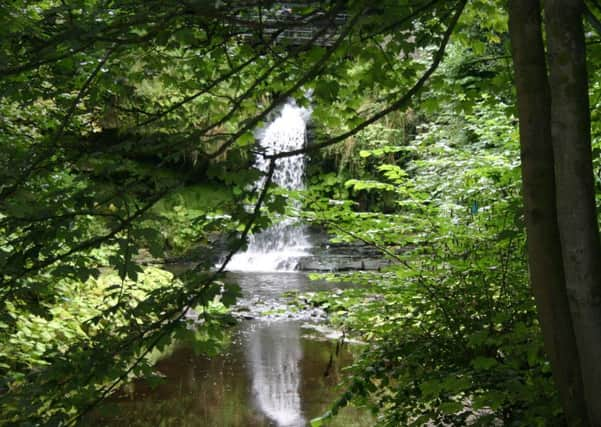A trip tothe Glenwas'¨a great'¨day out


When I was a child in the 50s a trip there was regarded as a great day out among trees and waterfalls along the banks of the Westquarter Burn as it meandered for nearly a mile from Redding to the Polmont Road.
For many centuries this pleasure had been limited to the family and friends of the mighty Livingstons of Westquarter, close relatives of the former Earls of Callendar.
Advertisement
Hide AdAdvertisement
Hide AdWhen the Falkirk lot were booted out after the Jacobite Risings of the 18th century, the Westquarter family survived and was still in place well into the 20th century. They enjoyed a huge estate with the glen and large parklands which included a house described by one visitor as “beyond comparison the most picturesque residence in the eastern district of Stirlingshire” though to be fair another observer thought it “an exceedingly rude piece of architecture with a plebian coat of faded yellow”.
It had date stones, 1626 and 1648. Picturesque or plebian, it was demolished in 1884 and replaced by the imposing baronial style Westquarter House which lasted around 50 years until the coming of the new model village.
Today only the fine 17th century doocot survives to remind us of the Livingston connection.
In 1909 the family sold the house and estate to the Glasgow coal master James Nimmo who owned Redding Colliery, the biggest pit in the Falkirk area.
Advertisement
Hide AdAdvertisement
Hide AdThe miners who worked for Nimmo lived throughout the Braes area and their housing conditions were appalling especially in the village of Standburn where three-quarters of the 170 houses were condemned as unfit for human habitation in the early 1930s.
Nimmo was unwilling to make repairs and Stirling County Council was faced with a major problem.
It was a time when social planners thought that by providing people with decent living conditions you were not only doing the right thing but also helping to make them ‘‘better’’ citizens with higher standards of behaviour and fewer problems.
This kind of ‘‘social engineering’’ was behind the idea of the model village which the authorities decided to create and in 1934 they purchased half of the estate for £3000 and appointed the architect John A Grant to design a village of 200 houses.
Advertisement
Hide AdAdvertisement
Hide AdThe work began in 1935 and cost around £70,000. It was a design of true genius with beautiful houses spread throughout the parkland keeping many of the trees and open spaces. There were little squares each with its own ‘‘village green’’ and at the bottom end of the estate the valley park became a recreation space for the families who began arriving from Standburn and Redding at the end of 1936.
The new school did not open for lessons until after the war – it was worth waiting for because it is one of the most attractive buildings in Falkirk district. Nothing plebian or rude about this one!
By the time the village was complete there were around 500 houses and a fast growing population.
The Glen was a natural playground for the new village children and many of the older residents have great tales to tell of their adventures both in and out of the burn!
Advertisement
Hide AdAdvertisement
Hide AdOf course like most places it has had its ups and downs over the years but in recent times there have been determined efforts by environmental groups and volunteers to tidy up, help contain the undergrowth and restore the pathways.
More power to their elbow – this is a local treasure that deserves all the care and attention we can muster.